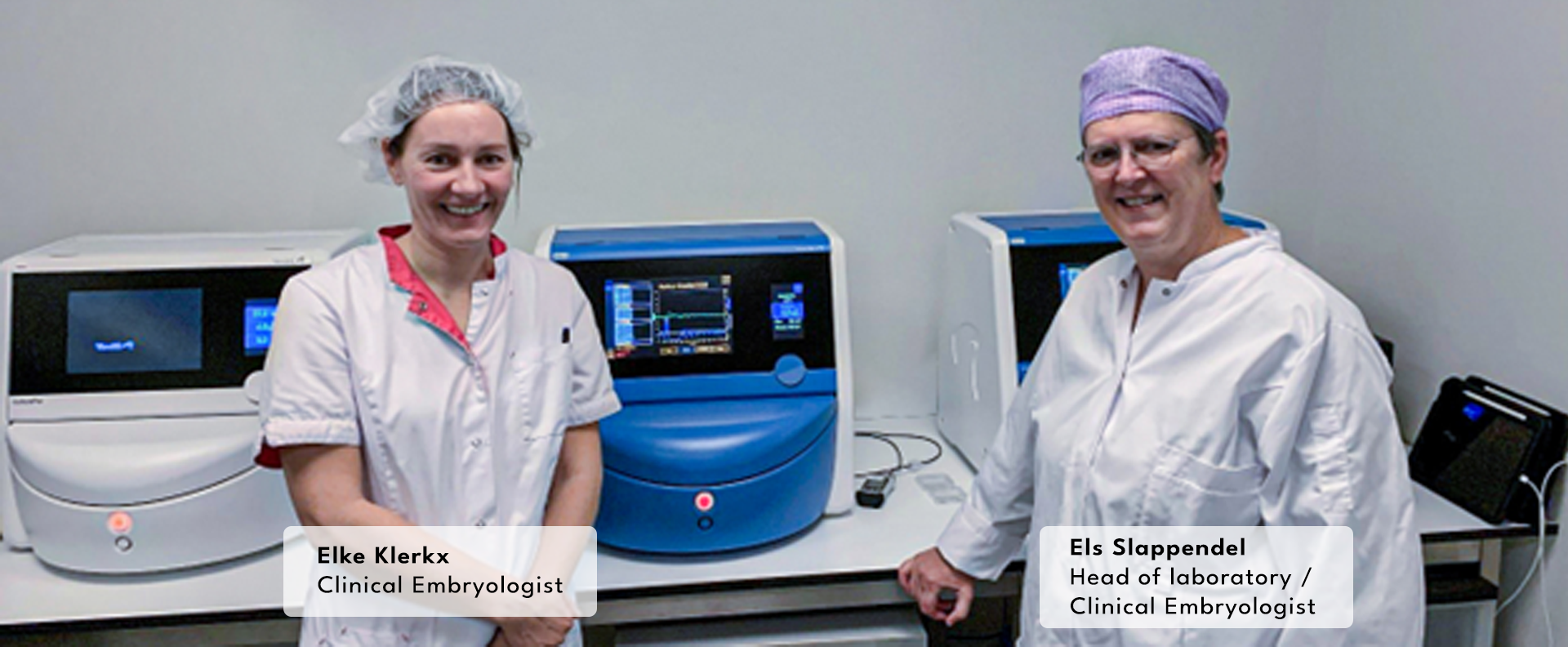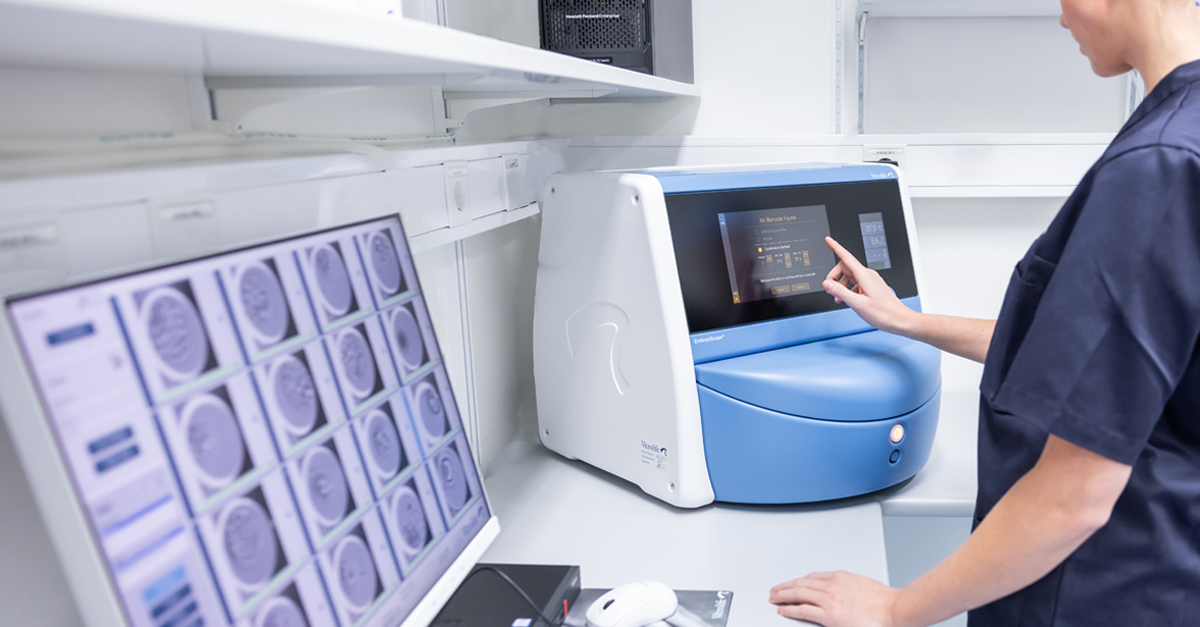In 2020, Nij Geertgen (Netherlands) became the first center in Benelux to offer 100% time-lapse for all patients.
Nij Geertgen is part of Nij Clinics, which consists of 3 centres: Nij Geertgen, Nij Barrahûs and Nij Linge. Nij Geertgen was the first to start with the EmbryoScope. Nij Clinics became part of Future Life in 2022.
By acquiring two EmbryoScope+, Nij Geertgen switched from traditional incubators to full time-lapse systems, and Els Slappendel, Head of laboratory / Clinical Embryologist and Elke Klerkx, Clinical Embryologist, have shared their story about becoming 100% Time-lapse with us.
|
FutureLife - European Leader in Reproductive Medicine and Women’s Care They are one of the largest and fastest-growing assisted reproduction providers in the world. Their current portfolio contains over 45 clinics in ten countries, where more than 1500 people are employed, including 450 physicians. Within the group a comprehensive treatment of fertility and sterility problems are provided, including genetic, immunological, and other follow-up examinations. |
What was your experience with Time-lapse systems before?
(Els) - At my previous employer I had participated in a time-lapse study. Here at Nij Geertgen we had no experience.
How did the idea to look at EmbryoScope+ come about?
(Els) - Nij Geertgen always strives for innovation to increase pregnancy chances and that this is how we came up with moving towards EmbryoScope+ Time-lapse incubators. If we at Nij Clinics are convinced something has an advantage for the patient, then we believe it should also be accessible to all patients. This means today that is the case, both at Nij Geertgen and sister department Nij Barrahûs.
What factors made EmbryoScope+ the best choice?
(Els) - For us, the availability of support was so critical. New systems and evolving software raise many questions, especially in the early years. Support must therefore be accessible and that was critical for us to choose Vitrolife which offers very strong support, 24h/24h and 7d/7d. We are always supported so quickly which makes the EmbryoScope system very reliable.
It was also very important to consider the cost. At Vitrolife it was very clear what the cost was and a one-time purchase versus an annual cost per cycle was most interesting for our reimbursement system in the Netherlands. As a third point, Vitrolife has always been a very reliable supplier. We find it incredibly valuable that your products and systems are delivered with a thorough scientific background / support, and that they are tested in a study context.
Since the purchase / implementation, what have you seen as the biggest advantages?
(Elke) - The EmbryoScope+ is first and foremost a very good and stable incubator. We work more efficiently and safely. We have super easy information from our embryos from A to Z in development, so you can easily make the best choice. The EmbryoScope+ is simply safer than the classic system of working. You have 1 incubator, 1 system that contains the embryos of day 1 to day 5, so the risk of something going wrong is just lower. The working method in the lab has become much simpler with fewer intermediate steps and not unimportant: we limit documentation and work paperless.
(Els) - Moreover, you are no longer tied to that certain time to annotate embryos. In the past, all embryos had to be removed from the classic incubator to be put under the microscope every morning between 8 and 11 am. This not only caused environmental stress for the embryos, but also sometimes had a stressful effect on us as embryologists. Today the embryos just stay in the EmbryoScope+, and we can calmly work with the EmbryoViewer without disturbing the embryos and assess our fertilizations in the afternoon, which is typically a much quieter time of the day. In terms of organization, you are suddenly much more flexible in the lab, and you have a much nicer workflow. Even if a doctor has had a conversation with a patient, and then has questions about the egg or sperm factor and / or what else can we do; we can very specifically look again at the video, at what happened to that embryo, such as: when did the fragmentation start (was that immediately with the first cell division or from day 3) etc.
That kind of information is easily absorbed quietly. The EmbryoScope+ has therefore also provided an extra discussion platform among colleagues. The importance of training new colleagues cannot be overstated. In the past, you had to take a quick look under the microscope or look at saved pictures that were just snapshots. Now we can quietly offer training during calmer moments in the lab; share the EmbryoViewer and explain everything while watching the videos together. We can also look at things that occur very rarely. In addition to working paperless, the EmbryoScope+ also has an ecological advantage, namely less plastics and gas consumption, so we also find the EmbryoScope+ to be a sustainable solution.
Can you share your vision of the future with EmbryoScope+?
(Els) - We are going to implement EmbryoScope's artificial intelligence software iDAScore this year. We are very excited about that.
For the time being, we are still doing overnight IVF. Short time insemination is an option to get it into the EmbryoScope+ faster, after 1,5h-2h, so this is something we want to investigate in the future.
If we can dream out loud, we hope that one day microfluidics will be implemented in the EmbryoScope+, in combination with denudation and IVF culture directly in the incubator. And while we are at is, an automatic pH measurement in line with adjustment of the gases, as this could become an advantage, certainly for laboratories that are not at sea level.
If you look back at the journey you've gone through
– are there things you would change in your implementation process?
(Elke) - It was a pleasant learning process, and everything turned out well. It was very significant for us to take time to switch from the daily check method to the KIDScore and Guided Annotation software. You have so much more information that you have to learn to deal with. You have to learn how to communicate this with the patient and learn how to make decisions with it. That certainly took time, but we wouldn't do it any other way if we could start over.
(Els) - We switched from the classic incubators to the EmbryoScope+ in a very short time. This only took us 2 months. But as Elke says, we took enough time to learn the software and worked with the KIDScore and Guided Annotation for a good time in combination with the daily check (both via the camera without disturbing the culture of our embryos of course).
You have to learn to work smoothly with the software and learn to trust it to reach a point where we were comfortable. We have learned to rely on KIDScore and Guided Annotation.
Working 100% Time-lapse: what is the biggest difference compared to 3 years ago?
(Els) - As addressed above, we are super satisfied with our EmbryoScopes. And I can tell you one thing: there is no one here who wants to revert to the former situation! And that was the case very quickly!

Further reading
How to observe embryos regularly while being careful not to stress them? The answer is time-lapse technology, which provides continuous observation in an undisturbed culture. Vitrolife has pioneered the development of time-lapse for use in IVF. We have more than 15 years of experience in developing hardware and software to improve embryo culture and evaluation. Thanks to our dedicated team of scientists, engineers, and education and support staff, you can feel confident partnering with us.
Topics: Time-lapse

